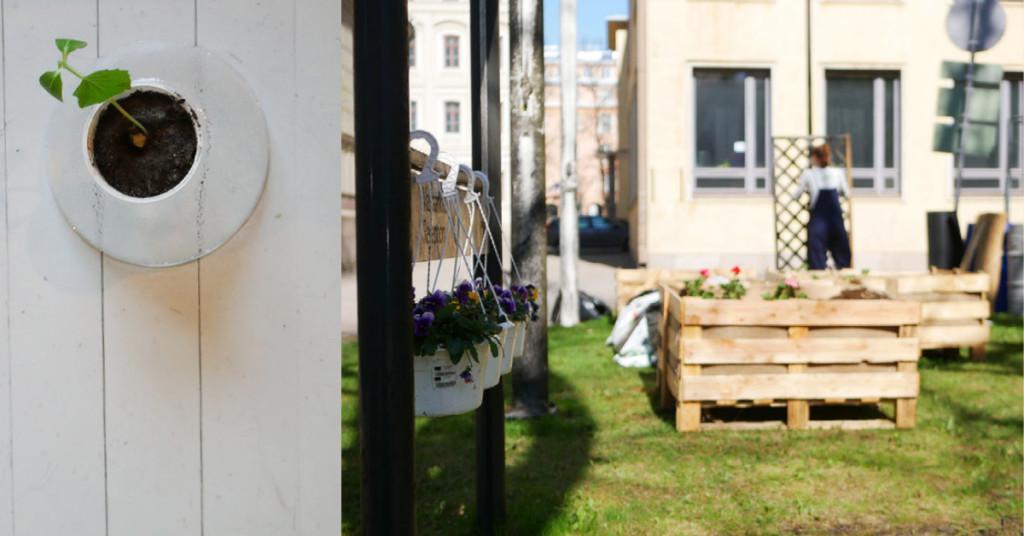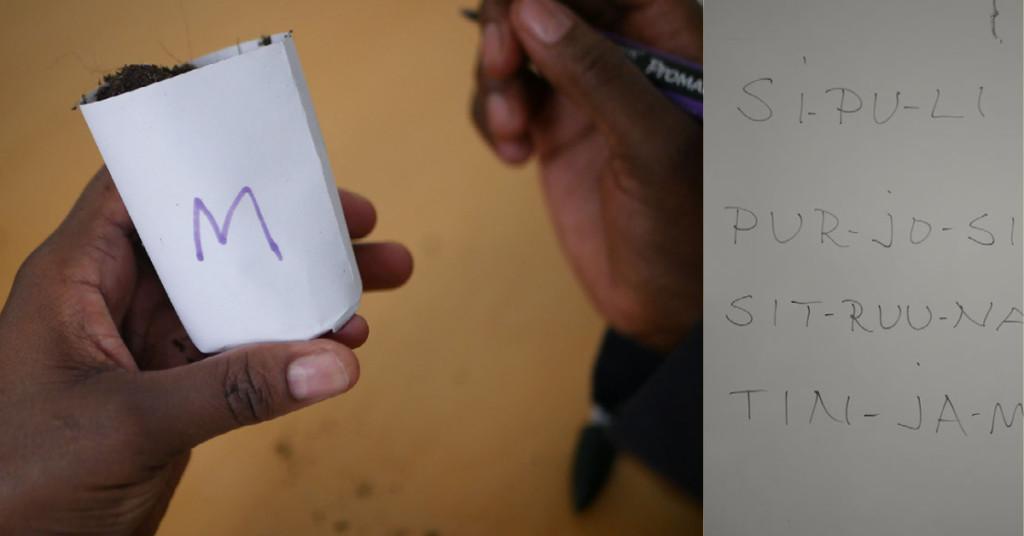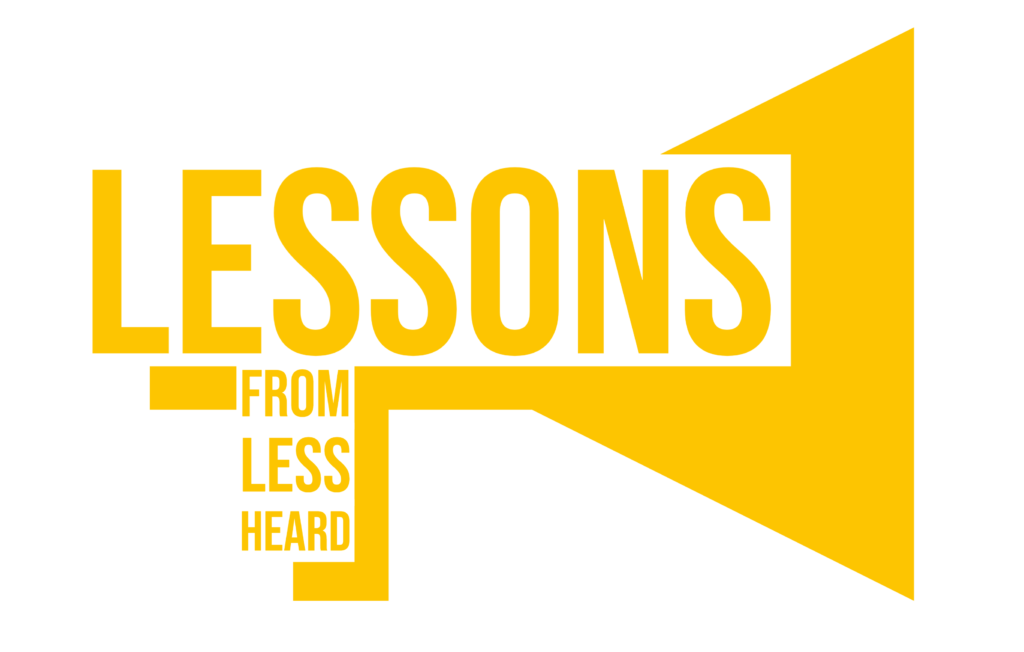What allows people without a shared language to work together and share experiences of success? What such thing can simultaneously foster understanding and working knowledge on the laws of nature – the possibilities and restrictions it defines– in our particular longitude and vegetation zone, and local environment? And furthermore, offers an opportunity for ”urban empowerment” through creation of visible and tangible impact in our shared urban space?
Urban community garden!

Throughout this spring, we have been working to create an edible garden installation in the heart of urban Helsinki with our migrant learners. The share of roles has been one where the educators and coordinators from Visio have worked to create opportunities and overcome the bureaucratic and informal challenges, in order for our students to plan and put together the garden.
We want to share some of the lessons we have learned so far by writing down the share of roles between the facilitator / coordinator and the learners, and sharing some tips to acquire the materials for less the money and to make sure the plants grow and garden thrives!
Share or roles
Facilitator / coordinator
Location
- Maps the possible locations for the garden (sunlight, irrigation, accessibility) and makes necessary arrangements and agreements with land owner / city officials etc
Planning
- Plans a session with supporting materials (images, videos, examples of plants) in order to facilitate the planning with learners of low literacy skills
Pre-growing
- Acquires the needed materials based on wishes of the learners (soil, seeds, pots, spray bottles, plant lamps)
- Gives guidance for the learners: how to plant and how to take care of the plants?
Building the garden
- Acquires and transports materials, gives guidance if necessary
- Arranges irrigation and legal- etc. formalities
Learners
Location
- Decide the arrangements within the location
- If multiple suitable garden spots, choose the final location
Planning
- Plan which plants to grow and what other elements to have in the garden
- Share roles: designers, builders, gardeners…
Pre-growing
- Plant the seeds
- Label the seedlings
- Nurse the plants (irrigation, potting on & hardening off the seedlings)
Building the garden
- Decide the final layout and arrangement of elements
- Build and decorate the growing beds, irrigation containers, fittings, furniture
- Plant the seedlings
- Create both instructions and labels/additional materials for passers-by to have a look at!
Some tips
Witness how willingly people contribute to making the city space greener and more communal!
- Begin the process by sharing a cup of tea and snacks. We got a thriving start for our gardening project when we drank some tea made of herbs that are familiar to most of us, regardless where we are from, and which are possible to be grown in our future community garden, too.
- Give names and words to the plants, materials and what you do. Planting stuff means a lot of repetition, which is a great opportunity to really learn new useful words and phrases. And connecting the words to something tangible, and with hand-on doing, even more so. As our Finnish language teacher said, ”I can teach Finnish out of anything, but very easily so, if it is motivating to the students.” And planting often is, as it connects us to each other, and to the Earth!
- Don’t pay for something that you can get for free. Many things that are useful in the urban garden, are rubbish to some other people: water containers, wood and cardboard to build the growing beds from, decorations such as half-empty paint cans… We managed to find even all of the soil for free from the dumpsters of gardening stores, because the wrapping had been damaged during the transportation, so they could not be sold anymore.
- Mobilise the passers-by! On hot summer days and weeks (*fingers crossed*), the plants need to be irrigated quite a bit. There might be some other maintenance needed as well. As the garden is in the shared space in a city, share the responsibility with the random passers-by! Write down a kind request and instructions for irrigation etc. and witness how willingly people contribute to making the city space greener and more communal!

”I can teach Finnish out of anything, but very easily so, if it is motivating to the students.”
This is where we are right now.
The installation will stay on throughout the best growing season, which in southern Finland lasts until the end of September. At the end of the season comes the time for the harvest (some plants might be harvested earlier), and of course cleaning the garden away.
While the fun with community garden pauses when the fall comes, it also marks the best time of the year for planting trees – and that is another perfect way to lay roots in the new home country for our migrant learners! But we’ll share our experiences on that on another occasion.
Have a happy gardening season!
This community garden and blog post is part of en Erasmus+ funded project Lessons from Less Heard.


